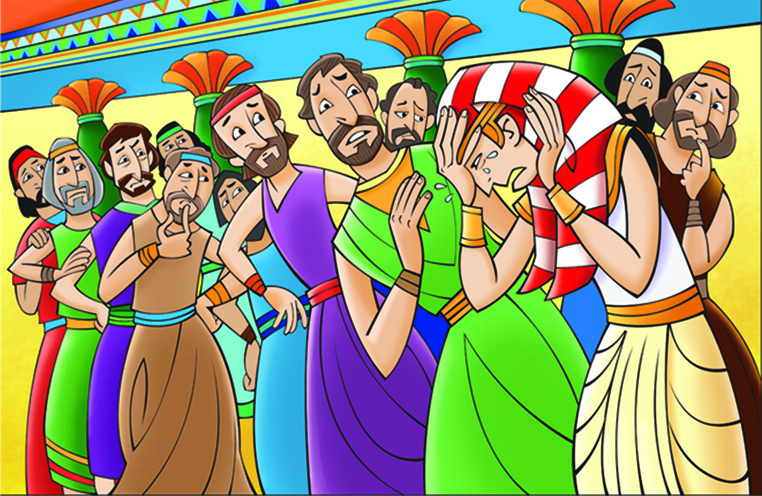In my inaugural post I promised to explore the value of humorous art for children’s books, educational material and the like. The world in which I usually work, religious publishing, is a serious world. As well it should be, because the mission of my publishers is to impart true and accurate information to even their youngest audience. I’m part of that mission, so I’m signed on to what they want to accomplish, and it’s my goal to provide the best art I can for their product. The caveat is that the best art I do is less than serious. I’m most beneficial to my clients when I produce fun, humorous illustrations for this most serious purpose.
Is that a problem? Is there a place for funny looking art in the not so funny world of religious education? The writers whose materials I illustrate treat their subjects as serious reality, replete with tragic events, broken lives and the recounting of many sorrows. If life is a vail of tears, how can a humorous illustrator like myself contribute anything worthwhile for the lesson at hand? To force the question, is humorous art a mockery of the serious business of repentance and faith? Making a defense for what I do and for those who hire me to do it, can be a challenge.
Since I’m talking about the propriety of a certain type of visual (cartoon) for a certain type of material (religious), it will help to look at the above illustration I did for the story of Joseph being visited by his older brothers, who had mistreated him in a serious way. They threw him into a well and told their father he had been killed by wild animals. He was pulled out of the well and sold into slavery. The scene I was hired to illustrate is in Genesis 45, showing Joseph breaking down in front of his brothers who abused him so violently. Not exactly a funny story. But the story ends well, with forgiveness and redemption for all involved. And therein lies a window for creative license. If the story ended miserably, a light treatment would be a mockery. Since the story resolves conflict and presents healing, the overall artistic treatment may be considered a “last laugh” on this dreadful situation.
This was a starting point for doing a kid-friendly illustration that captured interest and sparked imagination. Bright colors, curious gestures, a contrast between Joseph’s tears and his brother’s bewilderment hopefully drew kids into the scene. The characters are real enough, but not stodgy and irrelevant to their little image saturated eyes. On that level alone there was a place for this style.
Okay, fine; colorful and lively art got their attention. But did it risk leaving the impression that these stories are on the same level as their Saturday morning cartoons? Does this kind of art counter the teacher’s mission to impart life-long lessons and advance life-changeing faith? It’s a fair question and one that I ask myself from time to time. Let me admit that I’m doing a bit of thinking out loud right now, but here’s what I think. I don’t think this art jeopardizes kid’s faith anymore than they will expect a penguin to talk to them just because they saw one speaking on TV. When people go from kid to grown-up they can usually parse reality with make-believe and probably aren’t adversely affected by early experiences with imaginative imagery. It is expected that their faith will grow from “child-like” to mature because of a lifetime of influences, developmental thought, and deeper grasps of truth and faith.
It’s my hope, and my mission, to engage kids in a way that stays with them and nurtures their growing faith. I’ll risk showing an exaggerated scene of a sobbing Joseph so that when the kids transition into adults they will recall that grace and mercy ensure the last laugh over darkness and evil.

